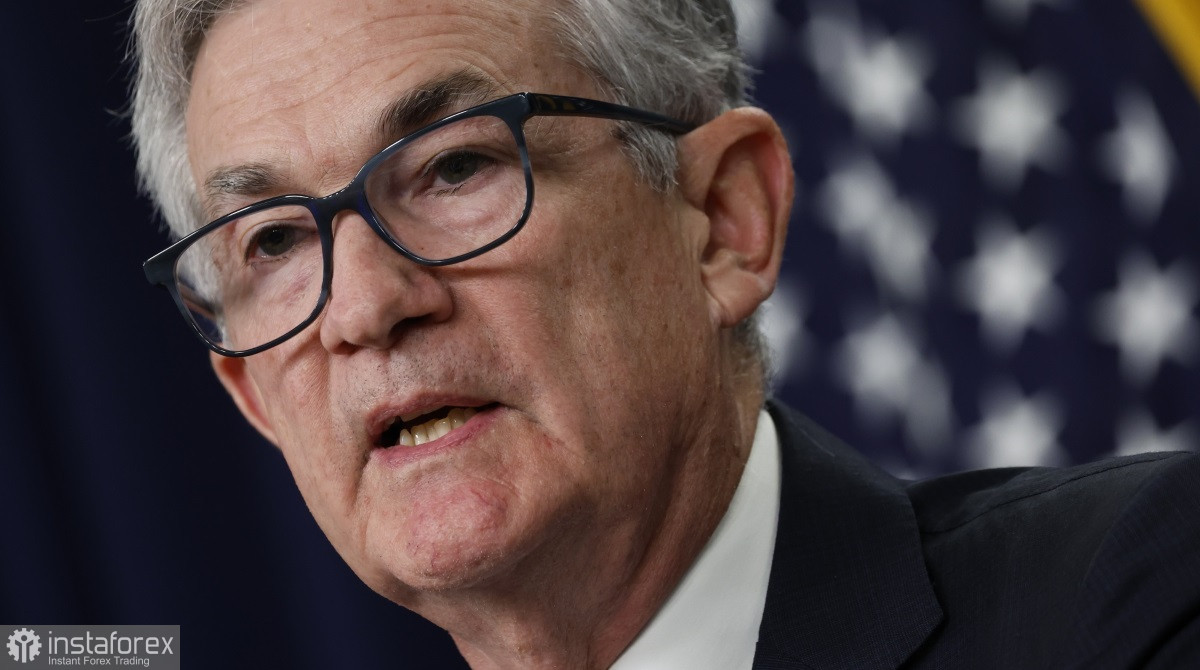The markets are closely scrutinizing everything central bank officials say in the meantime. Yesterday, it was revealed that Federal Reserve Chairman Jerome Powell tested positive for the virus COVID-19 and is displaying slight signs of malaise. The Fed issued a statement saying, "69-year-old Powell has tested positive and is aware of COVID-19 vaccinations and boosters." Powell works remotely while at home, as the Fed also stated.

Let me remind you that the next Federal Open Market Committee meeting, which sets policy, is slated for January 31–February 1. Following the meeting, Powell will have a press conference in Washington in the afternoon.
Experts claim that the current COVID-19 is different from the last pandemic because most people have hybrid protection from immunizations or the infection itself, and antiviral medications are widely accessible for the elderly and others with compromised immune systems.
A few Federal Reserve officials who voted on policy this year backed decreasing the pace of interest rate hikes, while two others supported an additional increase. This is despite Powell's struggles with both the coronavirus and inflation.
At a meeting in February of this year, Dallas Fed President Lorie Logan and Philadelphia Fed Governor Patrick Harker presented the case for a second, less aggressive 0.25% interest rate hike. Their remarks followed statistics showing that US retail sales decreased significantly more than forecast in December, while producer prices also decreased, extending an inflation slowdown that has been going on for several months.
Logan explained, "A slower pace is merely a technique to make sure we're making the greatest selections possible." Even if the rate of economic growth slows, "we may, and if required, should adapt our overall approach to maintaining restrictive financial conditions."
Harker stated that a 25-basis-point increase would be prudent going forward, reiterating remarks he made last week. At a University of Delaware event, he remarked, "I think we will reach 5.0% without any problems, but we need to do it at a more progressive pace."
All of these comments mirrored earlier ones made by more hawkish Cleveland Fed President Loretta Mester and St. Louis Fed President James Bullard, who emphasized the necessity for additional tightening of policy.
The Federal Open Market Committee, which will, as most investors anticipate, hike rates by a quarter of a percentage point at its upcoming meeting, has both officials voting this year. We can anticipate such a decision by the committee given the data on consumer prices, producer prices, and retail sales, as well as the statistics on the real estate market, which will be added to everything else today. Risky assets, including the European currency with the British pound, will react to this decision with quite a rapid increase.
Given that the bullish trend has not yet been broken, the technical picture of EUR/USD indicates that demand for the euro could resume at any time. There is also a prospect for more expansion and setting new records for the year. To do this, the trading instrument must remain above 1.0770, which will cause it to move to the vicinity of 1.0815. You may reach 1.0860 with ease by climbing over this point. If the trading instrument falls, only a breakdown of support at 1.0770 will put more pressure on the pair, pushing EUR/USD to 1.0720 with a possible drop to a minimum of 1.0685.
Regarding the technical analysis of GBP/USD, the pound's efforts to keep rising have been fairly successful so far. Buyers must continue to trade over 1.2310 to keep their advantage. The only thing that will increase the likelihood of a further recovery to the area of 1.2430, after which it will be possible to discuss a more abrupt move of the pound up to the area of 1.2485, is if the resistance of 1.2370 fails to hold. After the bears seize control of 1.2310, it is feasible to discuss the pressure on the trading instrument. The GBP/USD will be forced back to 1.2250 and 1.2190 as a result, hitting the bulls' positions.
 English
English 
 Русский
Русский Bahasa Indonesia
Bahasa Indonesia Bahasa Malay
Bahasa Malay ไทย
ไทย Español
Español Deutsch
Deutsch Български
Български Français
Français Tiếng Việt
Tiếng Việt 中文
中文 বাংলা
বাংলা हिन्दी
हिन्दी Čeština
Čeština Українська
Українська Română
Română

